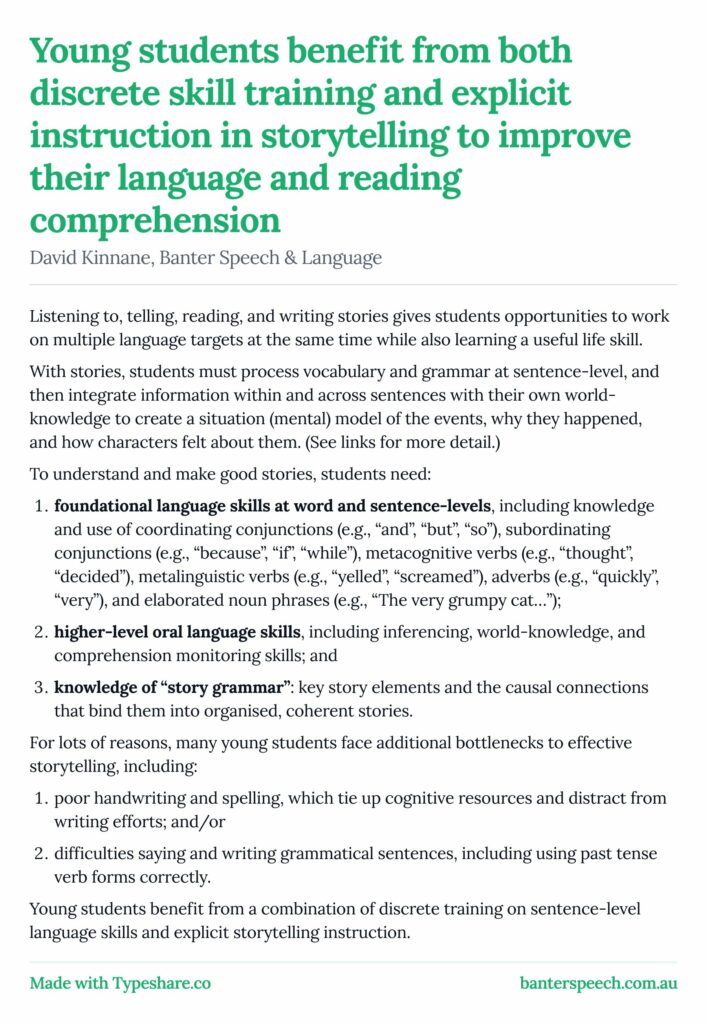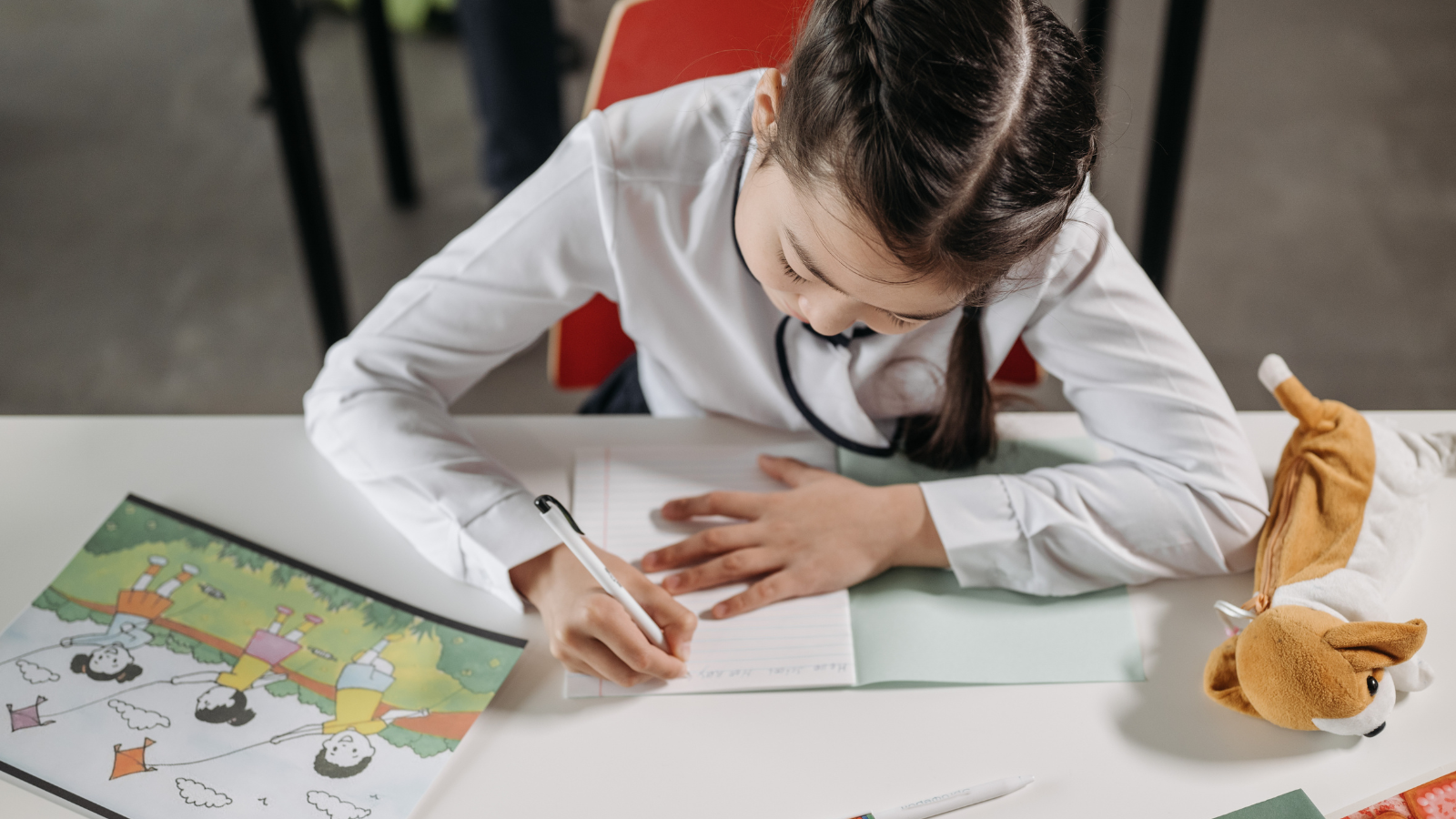Young students benefit from both discrete skill training and explicit instruction in storytelling to improve their language and reading comprehension
Listening to, telling, reading, and writing stories gives students opportunities to work on multiple language targets at the same time while also learning a useful life skill.
With stories, students must process vocabulary and grammar at sentence-level, and then integrate information within and across sentences with their own world-knowledge to create a situation (mental) model of the events, why they happened, and how characters felt about them. (See links below for more detail.)
To understand and make good stories, students need:
- foundational language skills at word and sentence-levels, including knowledge and use of coordinating conjunctions (e.g., “and”, “but”, “so”), subordinating conjunctions (e.g., “because”, “if”, “while”), metacognitive verbs (e.g., “thought”, “decided”), metalinguistic verbs (e.g., “yelled”, “screamed”), adverbs (e.g., “quickly”, “very”), and elaborated noun phrases (e.g., “The very grumpy cat…”);
- higher-level oral language skills, including inferencing, world-knowledge, and comprehension monitoring skills; and
- knowledge of “story grammar”: key story elements and the causal connections that bind them into organised, coherent stories.
For lots of reasons, many young students face additional bottlenecks to effective storytelling, including:
- poor handwriting and spelling, which tie up cognitive resources and distract from writing efforts; and/or
- difficulties saying and writing grammatical sentences, including using past tense verb forms correctly.
Young students benefit from a combination of discrete training on sentence-level language skills and explicit storytelling instruction.

Principal source: Gillam, S.L., Gillam, R.B., Magimairaj, B.M., Capin, P., Israelsen-Augenstein, M., Roberts, G. & Vaughan, S. (2024). Contextualised. Multicomponent Language Instruction: From Theory to Randomized Controlled Trial. (2024). Language, Hearing and Speech Services in Schools, 1-22.
Further reading and free resources
Stories help students to understand and remember new information. Here’s why.
Oral language comprehension: what is it? A plain English explainer
Higher level language overviews
Five ways to boost your child’s oral language and reading comprehension skills with sequencing
11 ways to improve writing interventions for struggling students
Learning to handwrite fluently gives your child a big advantage
Classic audiobook stories
Classic Audiobook Resource Pack for children in Kindergarten and Year 1
Classic Audiobook Resource Pack for children in Years 2 to 6
Examples of our contextualised language interventions we use
Aesop’s Fables: Narrative Language Workout Bundle

Hi there, I’m David Kinnane.
Principal Speech Pathologist, Banter Speech & Language
Our talented team of certified practising speech pathologists provide unhurried, personalised and evidence-based speech pathology care to children and adults in the Inner West of Sydney and beyond, both in our clinic and via telehealth.








